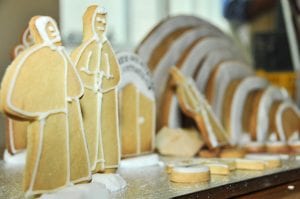Rare editions of Dante from UCL Special Collections on display
By Helen Biggs, on 17 March 2017
Rare editions of Dante from UCL Special Collections
Monday 27 March 5.30pm
The Warburg Institute, Woburn Square, WC1H 0AB
Admission free.
There will be an opportunity to see some of UCL’s rare editions of Dante’s works, and hear the Rare-Books Librarian talk about the history of the poet’s work in print, on Monday 27 March, 5.30-6.30pm, in the Common Room of the Warburg Institute in Woburn Square (immediately south of Gordon Square). The event will continue 6.30-7.45pm in the Institute’s Lecture Room with readings from the text and discussions from UCL’s Professor John Took and the Warburg’s Dr. Alessandro Scafi.
Want to know more about who Dante was and why his writings are important for us today? Try the weekly Dante readings on Monday evenings at the Warburg Institute or fortnightly talks on Tuesday evenings at the Italian Cultural Institute. The readings on Monday 27th will feature the moving passage in which Dante and Virgil emerge from the abyss of Hell on the shore of Mount Purgatory, leaving you, we hope, in an improved mood for the holidays, albeit on a cliff-hanger until readings recommence next term. The Tuesday talk on the 28th will be on the relation between Dante, Classical mythology and Islam.
Best wishes from the UCL Special Collections Team, UCL Italian and The Warburg Institute.
Text courtesy Tabitha Tuckett.
 Close
Close



